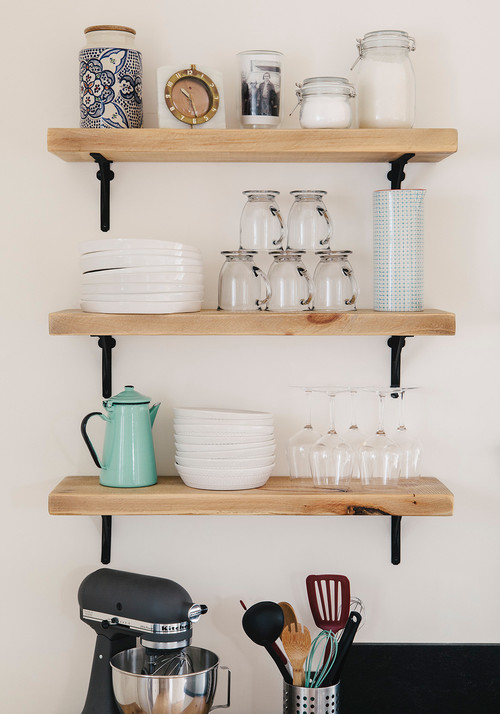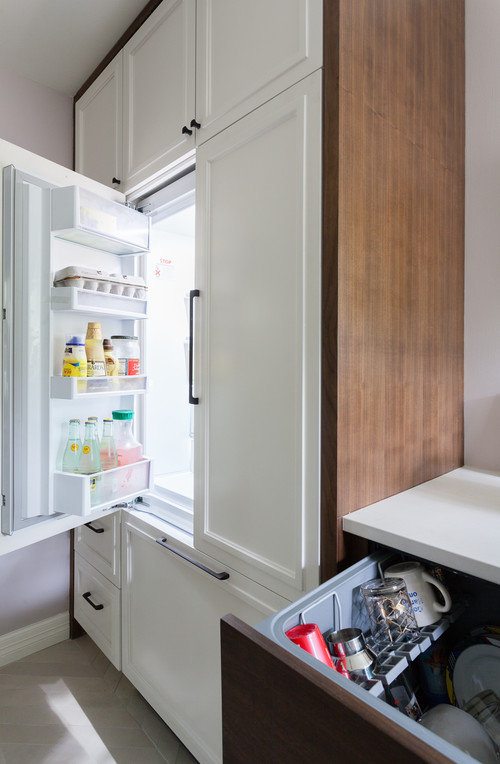9 kitchen organizing tips to help you waste less food

By Laura Gaskill
You’re probably all too familiar with the scenario: You go shopping and come home with bags full of gorgeous produce and other fresh ingredients. You have hopes of eating healthy, homemade meals throughout the week. But by the time the next weekend rolls around, you have to toss out fresh food that has spoiled and start the process all over again. Throwing away food is disheartening (even if you compost it), because it represents a waste of the money you spent on it — as well as the work of the farmer who grew it and brought it to market. To stop this cycle, here are nine ways to organize your kitchen and rethink your routines to minimize food waste and start using up all of the beautiful, healthy foods you bring home.
1. Keep a menu plan and shopping list posted in plain sight. Having a smart plan is the first step to reducing food waste, so be sure to carve out time to plan meals for the upcoming week, and post the menu in the kitchen. Keeping a running shopping list on a chalkboard or notepad in the kitchen where it’s accessible by everyone in the household is a great way to stay on top of what’s running low.
Zero-waste tip: Pencil in a weekly “use it up” dinner. Things that work well for this: salad bar night, make-your-own-pizza night, baked potato bar night, sandwiches or omelettes.
Brainstorm a few favorite meal ideas that are flexible enough to handle whatever is left in your fridge at the end of the week, and add that to your menu.
2. Keep your pantry organized (and check it before you shop). Having a neat and orderly pantry makes checking for ingredients before you shop much easier. Corral items of the same type (pastas, snacks) in bins with easy-to-grab handles, and store spices and cans where you can easily see labels at a glance.
3. Keep the rest of your kitchen neat and tidy too. A simplified kitchen makes cooking at home easier and more appealing, so you’re more likely to follow through with your menu planning (and not fall back on takeout).
Keep your workspace clean and clear, with frequently used tools close at hand, and get rid of clutter that’s making your cabinets feel overcrowded.
4. As a general rule, store fruit where you can see it. Out of sight, out of mind certainly pertains to fruit! Keep most of your fresh fruit out on the counter where you and your family will be reminded to grab it for snacks and desserts. However, there are a few times you should put fruit in the fridge: when it’s getting too ripe and you want to slow the process, and when you’re going away for a few nights.
Zero-waste tip: Freeze your surplus produce, chicken stock, and big-batch dinners to help it last much longer. Freeze berries and sliced fruit on a baking sheet, and then transfer to a freezer bag to store. Fresh veggies can be quickly blanched before freezing.
5. Prep veggies and store with care. There’s a bit of a catch-22 here. You’re more likely to eat fresh veggies when they’ve already been washed and prepped — but this also makes them prone to spoil faster.
Take care to buy only as much produce as you are realistically able to eat in a week, and handle it gently if you choose to prep in advance.
Washed and dried lettuces can be stored wrapped in a clean tea towel or paper towel and tucked inside a zip-top bag. Cut veggies hold up well in airtight food storage containers kept in the fridge.
6. Keep masking tape, a marker and a calendar on hand for labeling leftovers. We all know how it feels to pull a plastic container out of the fridge or freezer and wonder if what’s inside is still safe to eat.
Labeling leftovers with the date helps take away the guesswork so you’re more likely to use everything up in time. Make it easy to label leftovers and you’re a lot more likely to do it consistently.
7. Pull older ingredients to the front. This is a trick that those in the restaurant business use to prevent waste, and it works just as well in the home kitchen: When you load your fridge with fresh food, put the new items to the back and pull older items to the front. We naturally grab what’s right in front of us in the fridge, so organizing it this way ensures that what needs to get used up first, does.
8. Invest in a good set of food storage containers. A neat, stackable set of food storage containers in a range of sizes makes it easier to store everything from leftover casserole to precut carrots. Mason jars are another versatile food storage item to have on hand — they’re perfect for storing homemade salad dressings and fresh-squeezed lemon juice.
9. Store your recipes in the kitchen. Whether you refer to cookbooks, food magazines, a personalized recipe binder, bookmarked recipes online or some combination, having easy access to the recipes you need is key to keeping up the habit of cooking at home.
Make it as easy as possible to cook the recipes you had planned and you’re a whole lot less likely to revert to ordering takeout (and waste all of that nice food waiting in your fridge).
Original source: Houzz
Read original article here
Original article: The Province
Read original aricle here.










